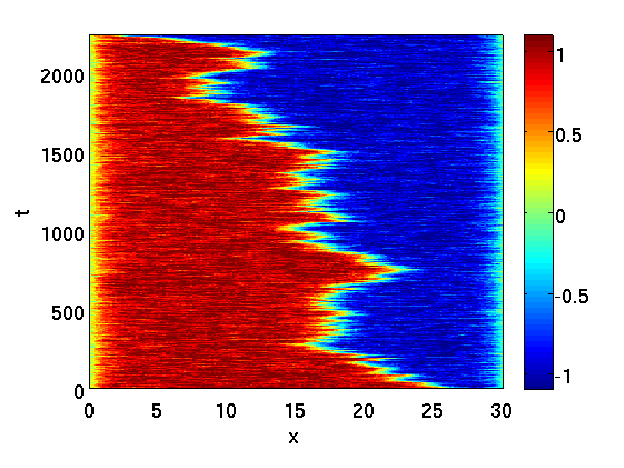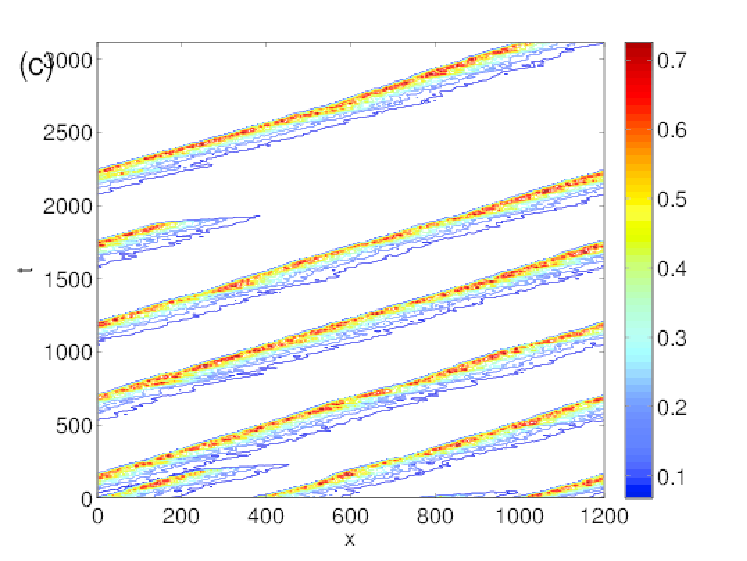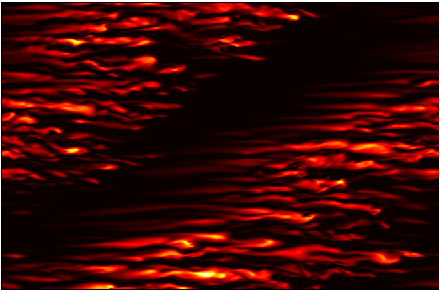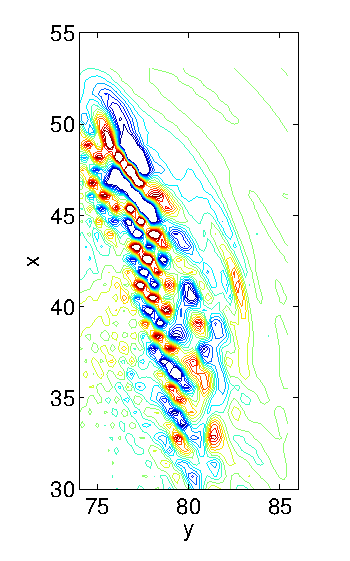



|
A noisy system which has several "equilibrium positions" can be metastable. This means that it will stend most of its time in either of the two states, and, from time to time, transition from one state to another. This situation is often found in turbulent flows of geophysical or aerodynamic relevance, where turbulent builds up several metastable large scale circulations and rarely (but importantly) drives transitions between them. Sampling efficiently these transitions in numerical simulations, in order to study their properties, is therefore a key challenge. |

|
Wall flows such a plane Couette flow (illustrated on the left) display a peculiar transition to turbulence. In many cases, the laminar base flow is linearly stable. This means that the transition to turbulence is subcritical: only finite amplitude initial conditions or forcing can lead the flow to turbulence. Moreover, turbulent and laminar flow can coexist in time and space. In transitional plane Couette flow this coexistence takes the form of oblique laminar-turbulent bands. |

|
Geophysical flow are typically flows in a rotating frame (caracterised by the coriolis parameter, ƒ) with a stratification (caracterised by the Brunt-Vaisala frequency N). In atmospheres and oceans, we always have ƒ≤ N. |